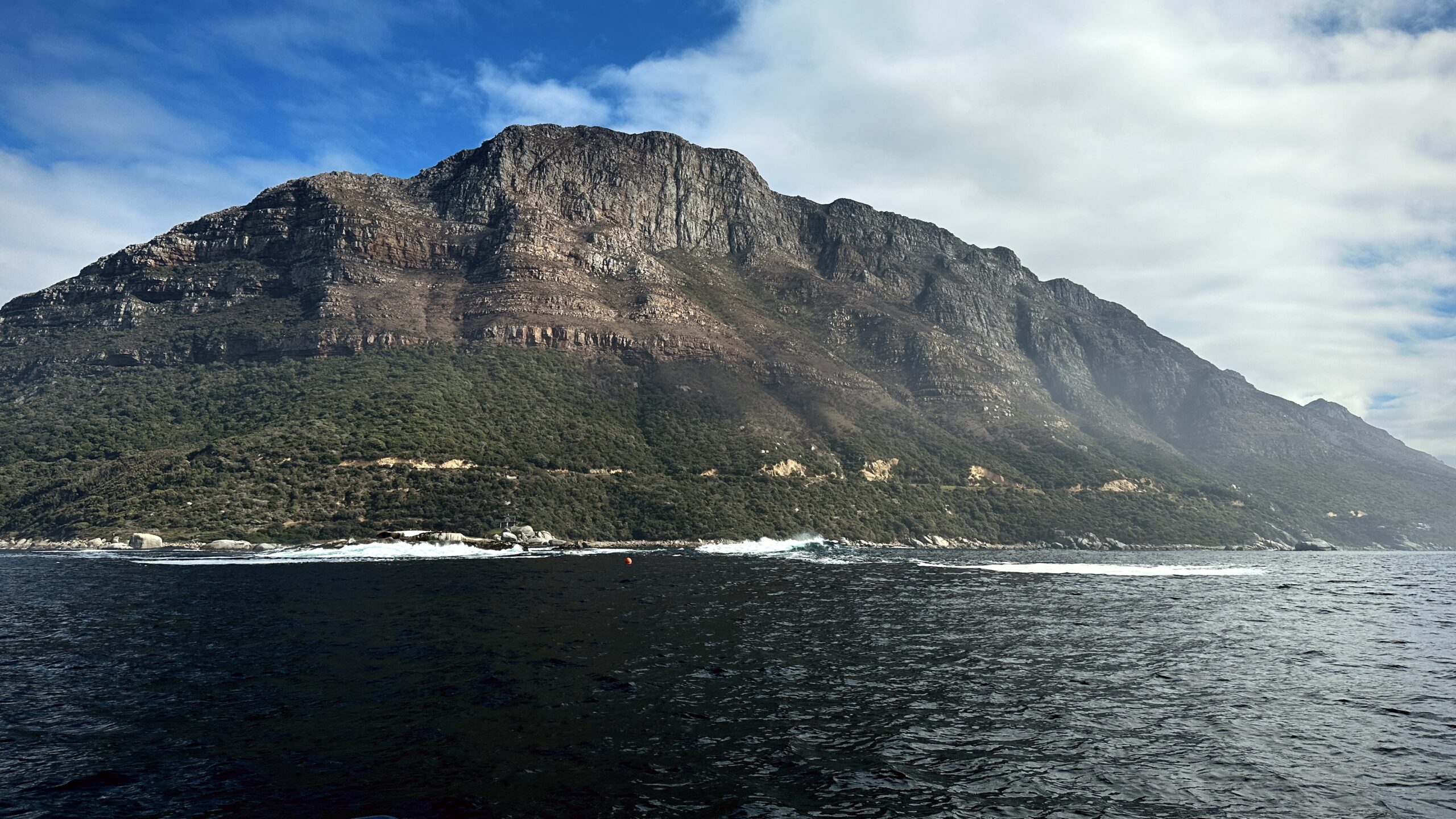When people think of scuba diving in South Africa, they picture one thing: cage diving with Great Whites. But during my time in South Africa, something unexpected was happening. Orcas were attacking the Great Whites and eating only their livers. Crazy, right? And while I wanted this thrilling experience of cage diving with sharks, I had a hard time finding an ethical operator that was open in April, which made me rethink my plans.
Instead of sharks, I had something else in mind: diving in the kelp forests near Cape Town. After watching My Octopus Teacher on Netflix, I was obsessed. Exploring this underwater jungle became a new bucket-list dive, and I was determined to make it happen.
Planning the Dive in Cape Town
While exploring Cape Town, one of South Africa’s best diving destinations, I had one week before heading to Afrikaburn. After researching dive shops, I reached out to Dive Team in Simon’s Town (FYI: most dive shops and sites are located there and in False Bay). Luckily, they went diving every day, based on the conditions. Within three days, I was gearing up for my first dive.
Diving with Cape Fur Seals
My first dive off Simon’s Town was rough. Not because of the water conditions but because it was my first real cold-water dive. I backrolled off the boat into the piercing cold. As the divemaster and I began to descend, the 55°F (13°C) water engulfed me. Even with a 5mm wetsuit, hood, gloves, booties, and a 1mm undershirt, I was fucking freezing.
Buoyancy was a struggle. Cold water diving meant extra weight to counteract the thicker wetsuit, and I spent most of the dive adjusting and trying to stay neutrally buoyant. Not ashamed to admit it—I was sinking more than I should have been.
Our first dive site was Partridge Point Seal Rock, and true to its name, a couple of Cape Fur seals swam alongside us. These “puppies of the sea” were playful and curious. I first dove with seals in Plettenberg Bay, so I was familiar with their energy.
Side Note: If you ever get the chance, I highly recommend diving with seals in Plettenberg Bay along the Garden Route. It’s a short, shallow dive, but so much fun, with seals swimming all around you. Some even playfully bite your fins. I went with Pro Dive Plettenberg, and they were great. They also offer reef dives in the area.

After swimming around the reef and spotting some cool marine life and corals, my guide signaled to me if I was cold. Yes, I was freezing and started to shiver. We ended the dive at 36 minutes, even though I still had plenty of air. I was slightly disappointed in myself for ending the dive early. But diving in cold water is more of a mental game, and I was determined not to let the cold get to me on our second dive.
During our surface interval, I soaked up the sun while chatting with my dive guide and the boat captain. We decided I had too much weight, so we adjusted my weight belt for the second dive.



Kelp Forest Diving in South Africa: A Bucket-List Experience
After warming up and a solid surface interval, it was time for the bucket-list dive: the kelp forests of Cape Town. The conditions were changing, the waves and current picking up, but the boat captain made sure we could still dive safely. I could already see some of the kelp rising above the water, and my excitement grew.
Once again, we backrolled into the sea. This time, the cold didn’t hit as hard (or I mentally got “used” to it), and I adjusted to my buoyancy much faster with less weight. My guide signaled that it was time to enter the kelp. I was ready.
The surge was strong as we weaved through the towering kelp. But in moments like this, you can’t fight it. You simply need to move with the rhythm of the water. The kelp swayed left and right and we went with it, using our hands to gently grip the stalks and pull ourselves forward. (Note: In South Africa, the kelp is strong and doesn’t tangle in dive gear, so holding on is safe.) It was hectic to navigate, but I was laughing and smiling the entire time.
Once we cleared the thickest part of the forest, we explored the reefs and canyons beyond. The surge settled slightly, revealing bright corals, colorful urchins, and a little pyjama shark tucked into the crevices. But my favorite part of this dive was drifting in an open clearing and looking up at the towering kelp canopy moving in perfect sync with the ocean. It felt peaceful. This was something I could watch all day.
Logging These Dives
By the time we surfaced, I wasn’t as cold. Maybe it was the excitement keeping me warm. Despite the cold, the weight adjustments, and the surge, this dive was a success. A true bucket-list moment.
As I floated on the surface, I took one last look at the kelp swaying beneath me. There was something mesmerizing about how it moved effortlessly with the current. No resistance, just flow. Maybe that’s what made this dive so special. It wasn’t just about ticking off a bucket-list experience. It was about learning to move with the water and embracing the unpredictability of the dive.
For me, scuba diving in South Africa was about diving into an entirely new underwater world. From playful seals to otherworldly kelp forests, this was one of the most unique dive experiences I’ve ever had. I can’t wait to come back for more. And for anyone looking to connect with the ocean on a deeper level? Add kelp forest diving in Cape Town to your list. You won’t regret it.
Would you try kelp forest diving? Let me know in the comments!

